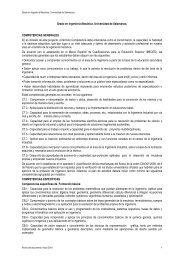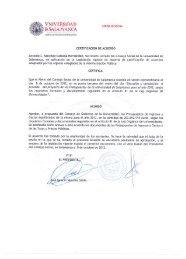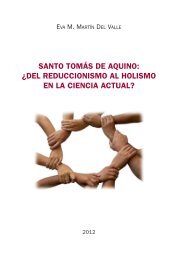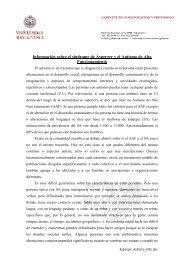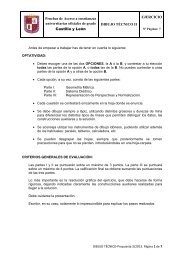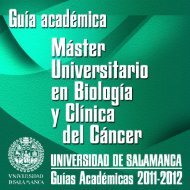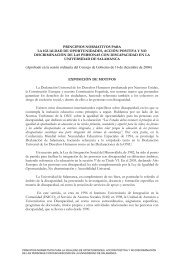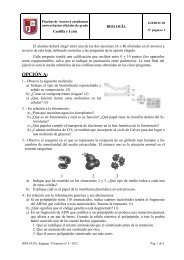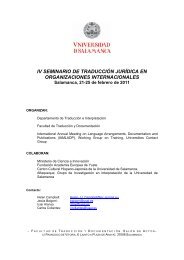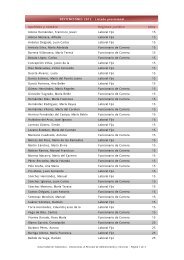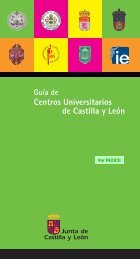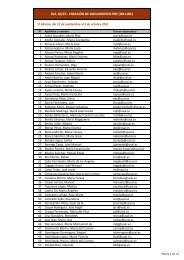Asignaturas (GuÃa Académica) - Universidad de Salamanca
Asignaturas (GuÃa Académica) - Universidad de Salamanca
Asignaturas (GuÃa Académica) - Universidad de Salamanca
You also want an ePaper? Increase the reach of your titles
YUMPU automatically turns print PDFs into web optimized ePapers that Google loves.
Máster Universitario en Psicogerontología • Guía Académica 2011-2012<br />
UNIVERSIDAD DE SALAMANCA<br />
37<br />
Arnold SE, Hyman BT, Flory J, Damasio AR, Van Hoesen GW. (1991). The topographical and neuroanatomical distribution of neurofibrillary<br />
tangles and neuritic plaques in the cerebral cortex of patients with Alzheimer’s disease. Cereb Cortex, 1, 103–16.<br />
Coen, R. (2009). Review of Geriatric neuropsychology: Practice essentials. Irish Journal of Psychological Medicine, 26(1), 47.<br />
Cunningham, C., Campion, S., Lunnon, K., Murray, C. L., Woods, J. F. C., Deacon, R. M. J., et al. (2009). Systemic inflammation induces<br />
acute behavioral and cognitive changes and accelerates neuro<strong>de</strong>generative disease: Biological Psychiatry.<br />
Farroqui, T y Farroqui, AA. (2009). Aging: An important factor for the pathogenesis of neuro<strong>de</strong>generative diseases. Mechanisms of Ageing<br />
and Development, 130, 203-215.<br />
McDonald, CR., et al. (2009). Regional rates of neocortical atrophy from normal aging to early Alzheimer disease. Neurology, 73, 457–465<br />
Perea, MV. y La<strong>de</strong>ra, V. (2005). Demencias. En: MV. Perea y A. Ardila. Síndromes neuropsicológicos. <strong>Salamanca</strong>: Ed. Amarú, pp. 175-195.<br />
Ross, CA. y Poirier, MA. (2004). Protein aggregation and neuro<strong>de</strong>generative disease. Nat. Med., 10 (Suppl), S10–S17.<br />
Woulfe, J. (2008). Nuclear bodies in neuro<strong>de</strong>generative disease. Biochimica et Biophysica Acta 1783, 2195–2206<br />
10.- Evaluación<br />
Consi<strong>de</strong>raciones Generales<br />
La evaluación se hará sobre un trabajo que los estudiantes <strong>de</strong>berán realizar individualmente.<br />
Criterios <strong>de</strong> evaluación<br />
A<strong>de</strong>cuación <strong>de</strong>l trabajo a los contenidos <strong>de</strong> la asignatura.<br />
Actualización <strong>de</strong>l tema.<br />
A<strong>de</strong>cuación <strong>de</strong>l trabajo a las características <strong>de</strong> un artículo científico.<br />
Instrumentos <strong>de</strong> evaluación<br />
METODOLOGIAS DE EVALUACION<br />
Metodología Tipo <strong>de</strong> prueba a emplear calificación<br />
Análisis <strong>de</strong> la capacidad <strong>de</strong>l estudiante a la hora <strong>de</strong> presentar un<br />
trabajo científico relacionado con la materia. Relevancia <strong>de</strong>l tema.<br />
Trabajo presentado por escrito<br />
Exhaustividad y actualización <strong>de</strong> las fuentes. Coherencia argumental.<br />
100%<br />
Pertinencia <strong>de</strong> la discusión y las conclusiones<br />
Total 100%<br />
Observaciones (p.e. sobre exámenes especiales, adaptaciones, recuperación, etc.):<br />
Recomendaciones para la evaluación<br />
Recomendaciones para la recuperación



